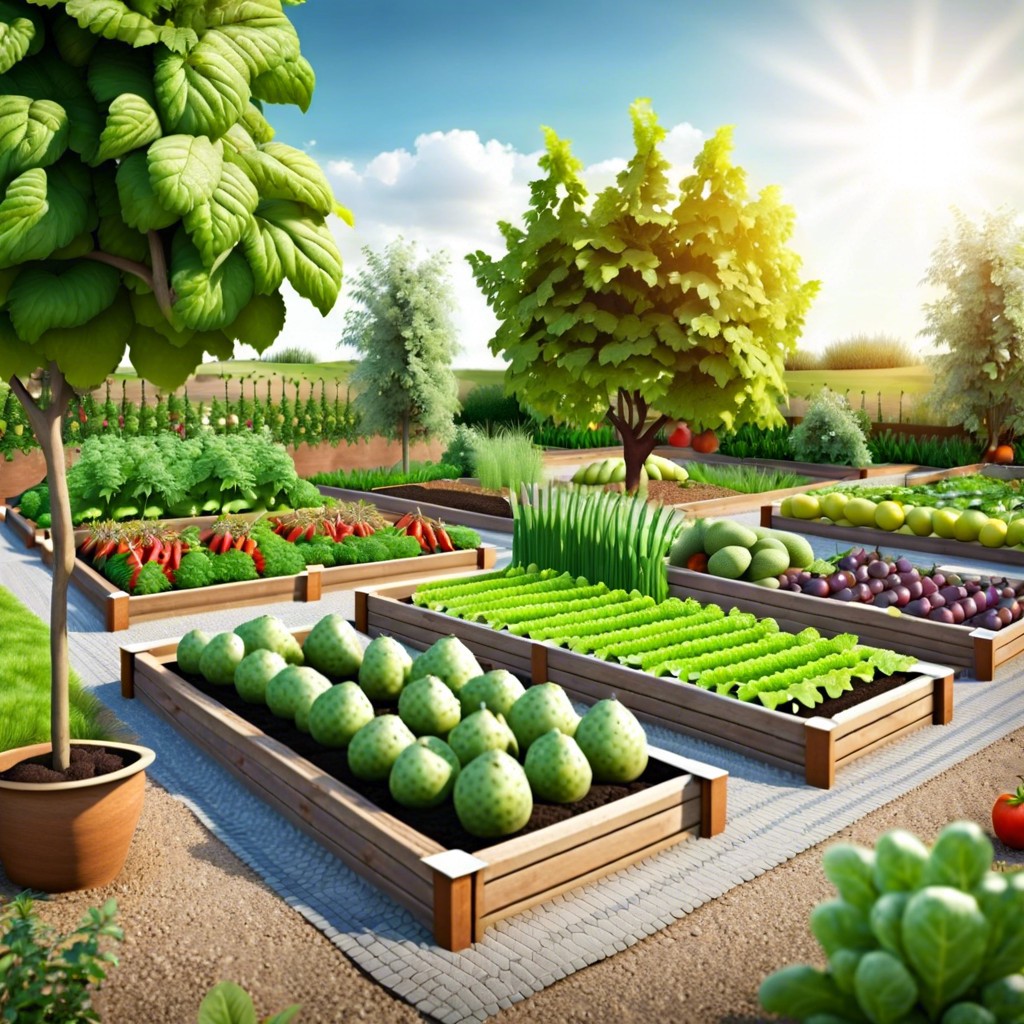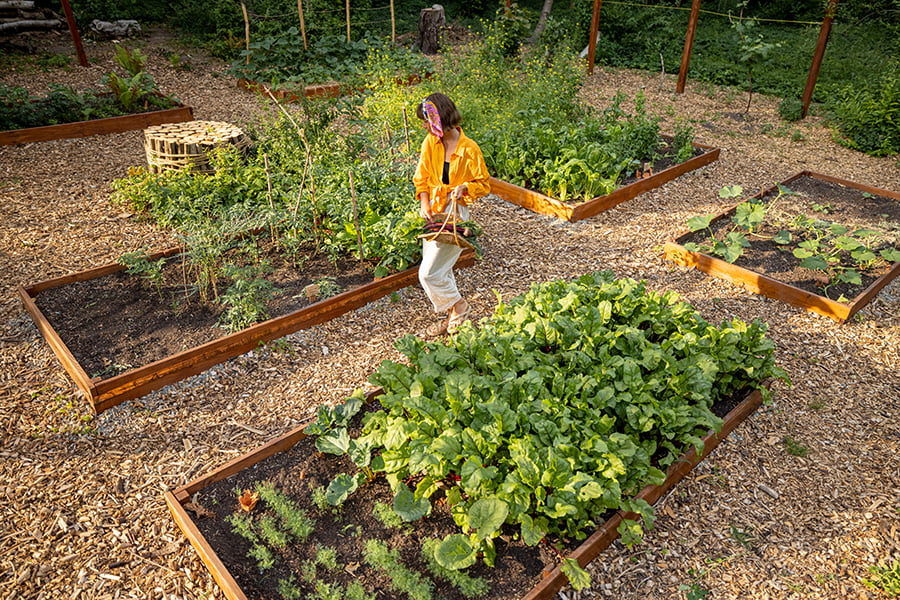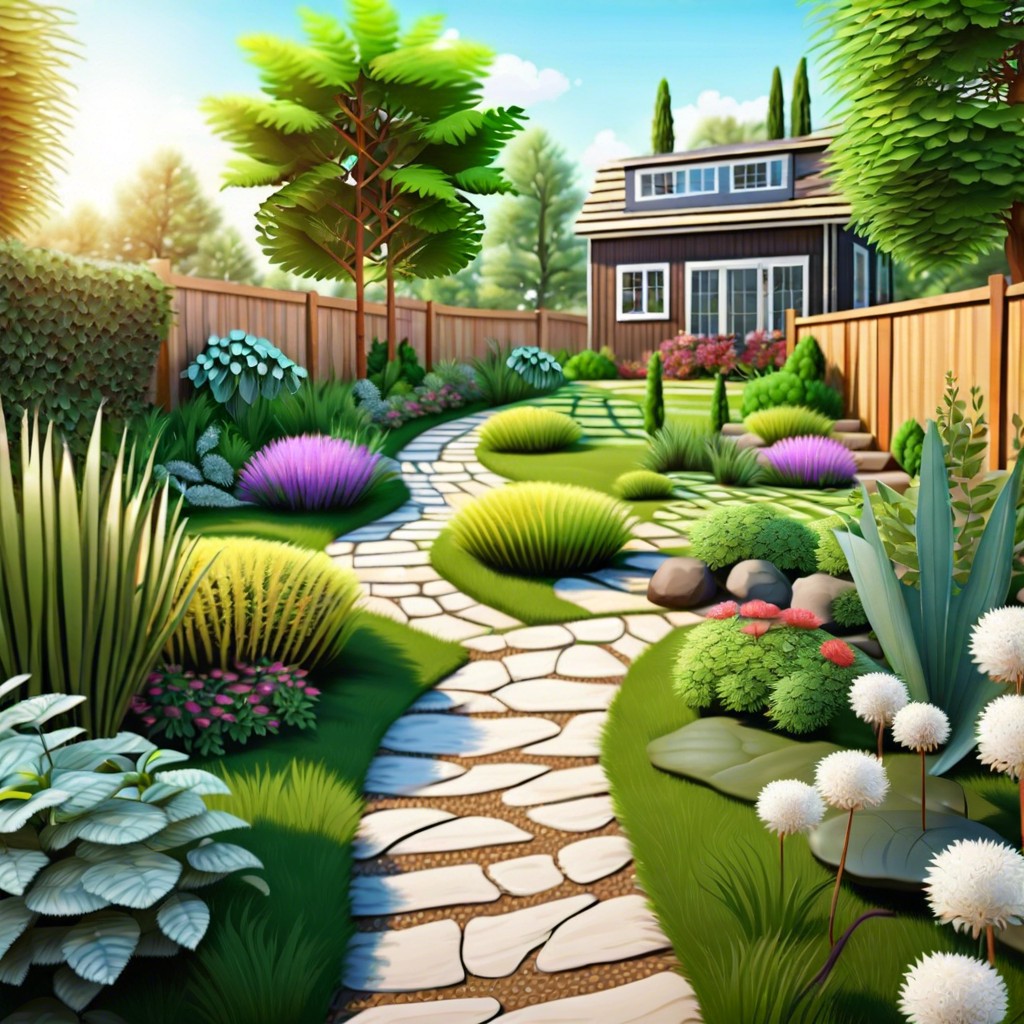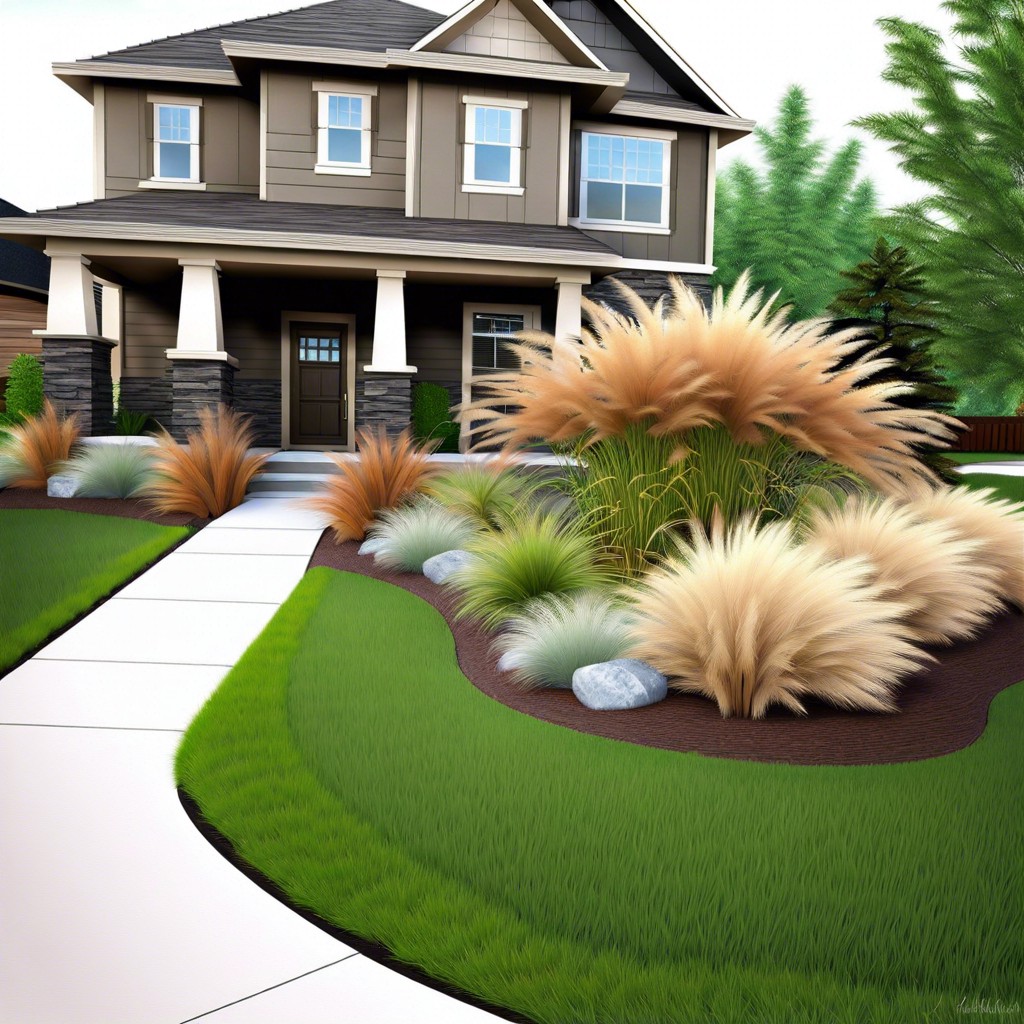In this informative article, you will learn about edible landscaping, a sustainable and aesthetically pleasing method of integrating food-producing plants within residential and urban garden designs.
Key takeaways:
- Edible landscaping maximizes land use for both aesthetics and food production.
- Benefits include biodiversity, cost savings, and healthier diets.
- Principles include plant selection, sunlight patterns, companion planting, and efficient space use.
- Design considerations include layout, diverse plant mix, management, and aesthetics.
- Edible landscaping promotes sustainability, reduces environmental impact, and conserves resources.
Definition and Benefits of Edible Landscaping

Edible landscaping is the practice of integrating food-producing plants within a decorative garden setting. The concept combines ornamental gardening with the cultivation of vegetables, fruits, herbs, and edible flowers to create a functional yet attractive landscape. It promotes the use of every square inch of space, whether it’s a sprawling backyard or a small urban balcony, for a dual purpose: aesthetic appeal and food production.
One of the key benefits is that it allows homeowners, community members, and even city planners to maximize the use of land. There’s something incredibly satisfying about picking fresh produce right from your front yard or flowerbed.
By incorporating edible plants, you’re also inviting biodiversity into your garden space. This invites a variety of beneficial insects and birds that contribute to the ecological health of the area. Moreover, edible landscaping can reduce grocery bills as you rely on homegrown produce, adding a cost-effective element to your household.
Health-wise, tending to an edible landscape provides physical activity, reduces stress, and encourages a healthier diet. Growing your own food means more fresh, nutritious produce in your diet, and the knowledge that it’s free from the heavy pesticides you might find in store-bought options.
Additionally, edible landscapes help to localize food production and reduce the carbon footprint associated with transporting food. This approach to gardening fosters a deeper connection with the land, as you personally contribute to the nurturing and harvesting of the food on your table.
Basic Principles of Edible Landscaping
Edible landscaping merges the love of gardening with the practicality of growing your own food. Enthusiasts of this garden design approach embrace several foundational principles to ensure their landscapes are both beautiful and bountiful.
First, selecting the right plants is key. You’ll want to prioritize species that are well-suited to your local climate and soil conditions to minimize maintenance and maximize yield. Consider incorporating a mix of perennials, like fruit trees and berry bushes, with annuals such as vegetables and herbs for a continuous harvest.
Another core principle is understanding the patterns of sunlight in your garden. Edible plants typically require ample sun to flourish, so mapping out sunny versus shaded areas in your yard will dictate the best placement for each type of plant.
Also, adopting companion planting is a smart strategy. This involves grouping plants with complementary characteristics to enhance growth, deter pests, and optimize the use of space. For example, tall sunflowers can provide shade for cool-season crops like lettuce, while basil planted near tomatoes can help repel insects.
Furthermore, efficient use of space is a practical aspect of edible landscaping. Raised beds, trellises, and containers are innovative solutions for growing food in limited areas, including urban settings. Not only do they add visually compelling elements to the landscape, but they also make gardening more accessible and manageable.
Lastly, consistency in care—from watering and feeding to pruning and harvesting—ensures that your living pantry thrives. Regular attention to your plants‘ needs will lead to a more productive garden, so setting a routine is essential.
Embracing these principles will pave the road to a vibrant garden that nourishes both the body and the soul, yielding freshness right from your backyard.
Design, Management, and Aesthetic Considerations for Edible Landscapes
Creating a pleasing and practical edible landscape requires thoughtful design to marry form with function. Start by considering the layout of your space; choose a design that both accents the aesthetic of your home and offers easy access for maintenance. Incorporating curving pathways and defined beds can provide an attractive structure for your edible plants.
Choose a diverse mix of fruits, vegetables, herbs, and flowers that not only look good together but also have compatible growing requirements. Think about color combinations and seasonal changes. For example, bright chard can sit alongside purple basil for a pop of color, while strawberries can edge a path, offering a sweet treat as you wander through your garden.
Management is critical for a successful edible landscape. Consistent watering, proper feeding, and regular pruning will keep your plants healthy and productive. Implement a composting system to enrich the soil and cut down on waste. Mulching helps with weed control and moisture retention, keeping your garden looking tidy.
Aesthetic touches should not be overlooked. A well-placed trellis with climbing beans or cucumbers can serve as a living screen, while fruit trees can offer shade and structure. Edible flowers like nasturtiums and lavender can attract pollinators and add beauty. Remember to consider the heights and textures of plants as well, pairing tall, striking sunflowers with low-growing thyme or oregano to create layers and depth.
Ambient considerations like lighting can transform your edible landscape into an enchanting evening retreat. Solar-powered garden lights or strategically placed spotlights can highlight specimen plants or key features of your garden, extending its appeal beyond daylight hours.
By integrating these elements with a focus on both appearances and functionality, your edible landscape will not only feed your body but also delight your senses.
Sustainability and Environmental Impact of Edible Landscaping
Edible landscaping is a powerful ally in the sustainability movement, promoting an array of environmental benefits. By integrating food plants into your yard, you’re essentially creating a mini ecosystem that supports biodiversity. Pollinators like bees and butterflies thrive as they’re drawn to the flowering edible plants, and this pollination process is vital for the health of our food systems.
When you grow your own fruits, vegetables, and herbs, you’re also reducing your carbon footprint. Consider the journey that supermarket produce takes to reach your plate – often involving long-distance transportation, refrigeration, and packaging. By swapping out even a small percentage of store-bought items with those from your garden, you’re contributing to a reduction in greenhouse gas emissions and resource consumption.
Furthermore, edible landscapes typically require far fewer chemical inputs than traditional lawns. Lawns are often maintained using synthetic fertilizers and pesticides, which can have harmful environmental impacts, including water pollution and soil degradation. Edible gardens encourage the use of organic practices that preserve soil health and water quality.
Water conservation is another key element of sustainable landscaping. Many edible plants, once established, are more drought-tolerant than conventional turf grasses, and techniques like rainwater harvesting and drip irrigation further conserve this precious resource.
By embracing the principles of edible landscaping, you help create a greener, healthier environment for current and future generations. This approach challenges the notion of landscaping for appearance alone, offering a functional space where aesthetics and ecology go hand-in-hand.
Legal, Community, and Cost Considerations for Edible Landscaping
Before transforming your yard into a veritable buffet, it’s crucial to navigate the legal landscape. Homeowners associations, for example, might have restrictions on the type of plants you can grow, especially in front yard spaces. It’s always advisable to check with local ordinances and zoning laws; some neighbors may be allergic to certain plants or there could be invasive species regulations to consider.
Engage with your community by sharing your vision. A well-maintained edible landscape can be a point of pride and encourage others to follow suit. It could even spark community projects like shared gardens that benefit all involved. Plus, in areas known for food deserts, your landscape could contribute to alleviating the lack of fresh produce.
When it comes to cost, starting an edible landscape can be an investment. Costs for seeds, plants, soil amendments, and possible fencing to deter critters must be considered. However, think of the long-term savings on your grocery bills. With careful planning, the initial expenses can be recouped over time as you enjoy the literal fruits (and vegetables) of your labor. Additionally, choosing perennials can provide returns for years to come, mitigating the need for annual expenses.
Simple cost-saving strategies include starting from seeds rather than nursery plants, composting to enrich your soil naturally, and using mulch to reduce water usage. Ultimately, while there are considerations to be made, the payoff of a beautiful, functional space can far outweigh any initial legwork or expense.




